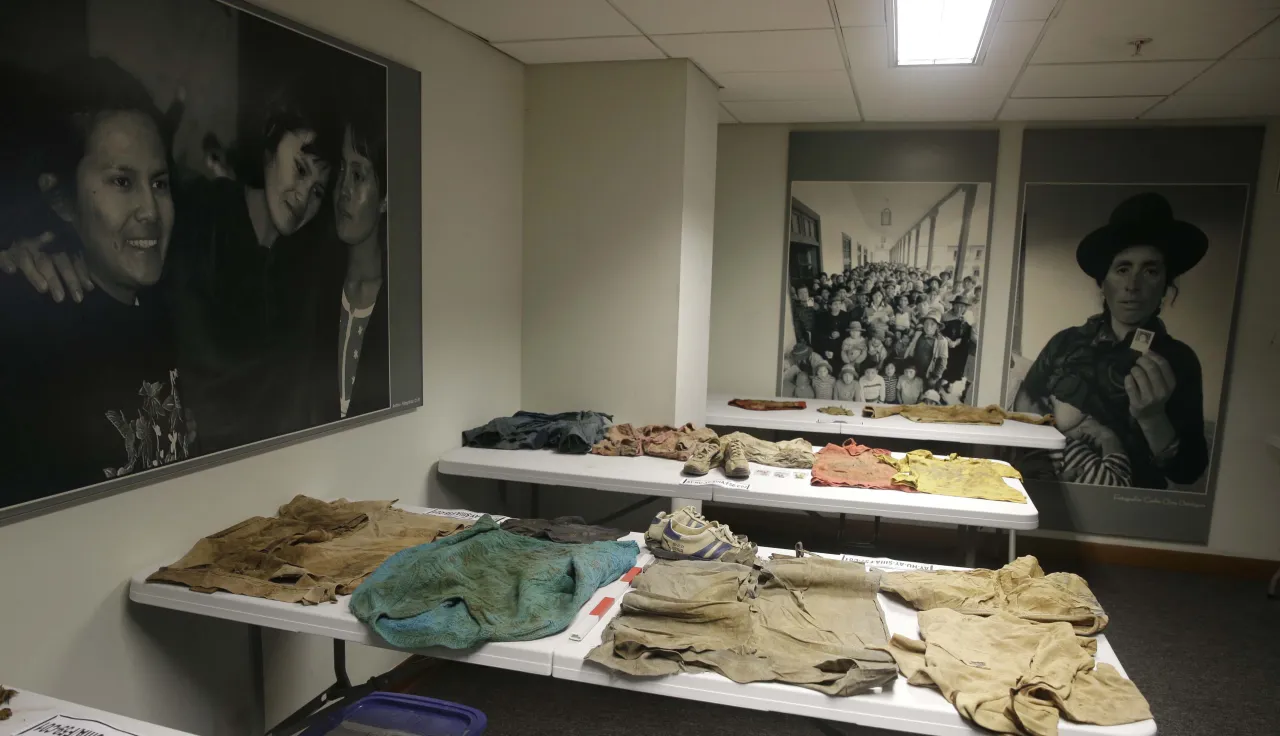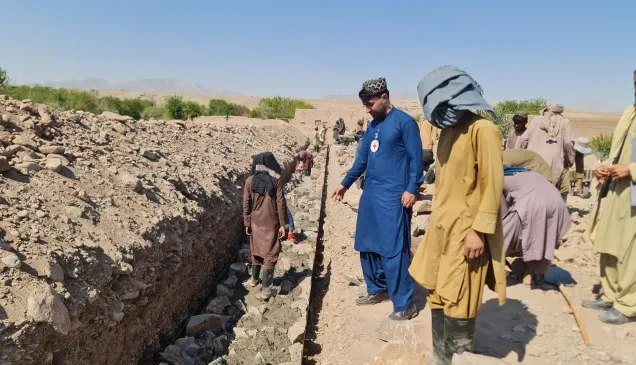Peru: Travelling exhibition aids search for relatives of missing persons

Clothing and objects belonging to 54 unidentified people were exhibited recently by the Peruvian Institute of Forensic Medicine (IML) in the human rights ombudsman’s office in Lima. Their remains were found between 2005 and 2009 at burial sites in an area known as “La Hoyada” (The Hollow) in Huamanga province, Ayacucho region, in south-central Peru.
The clothing exhibition, and an album of photographs of the personal effects, are designed to help identify the dead. “People whose relatives went missing, and who know or believe they might have been brought to this area, can stop by, look at the photos, and see whether they recognize their belongings,” said Rafael Barrantes, who runs the ICRC programme on missing persons and their families in Bolivia, Ecuador and Peru.
Identification of the skeletal remains is a complicated process that has taken many years, since there is no information about relatives with whom genetic comparisons could be made.
It is estimated that more than 15,000 people disappeared in Peru during the violence that shook the country between 1980 and 2000. So far only about 1,300 people have been identified and their remains returned to their families. More than 30 years on, the tragedy continues for many other families, who continue to await news of their loved ones.
The exhibition of clothing and objects remained on display in Lima until 15 September, when it moved to Huamanga. From there it will travel to different communities in Ayacucho and in Huancavelica province.
The ICRC seeks to bring closure to the families of missing persons. As part of this effort, it assists the attorney-general’s office and non-governmental forensic institutions by promoting coordination and technical cooperation, standardized procedures, suitable investigation strategies, information management and centralization, training, and quality control of forensic investigations.
The ICRC also supported the publication of the clothing album and helped with practical arrangements for the exhibition.
For more information:
Dafne Martos, ICRC, Lima, tel: +51 1 241 99 04



